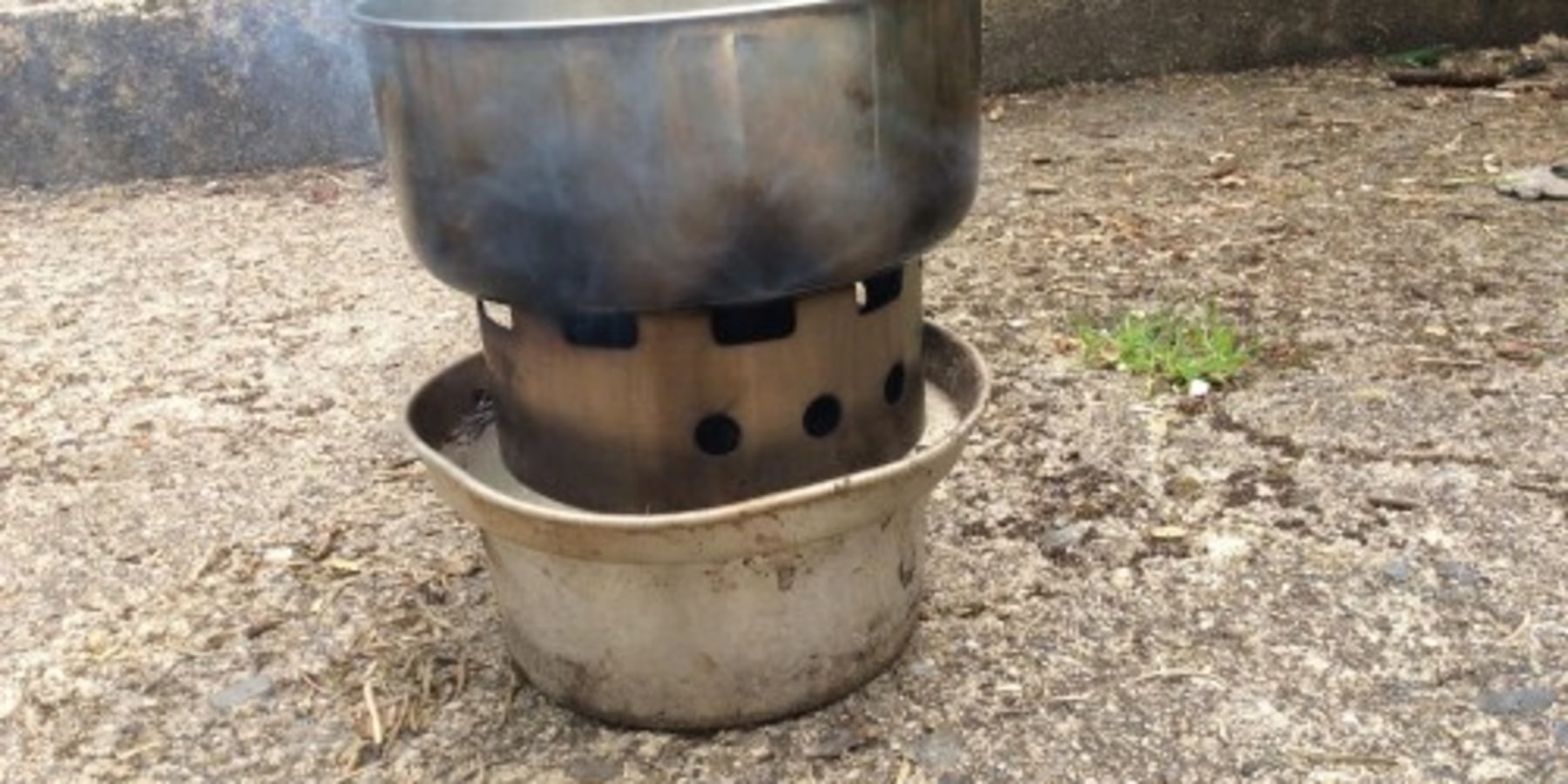Kelly Kettle Hobo Kit review.
On taking receipt of the Hobo which I plan to use with my Basecamp Kelly Kettle, I first weighed it and found it would add a further 300 Grammies to the 975 grammes that my kettle weighs. The construction, in contrast to the aluminium kettle, is of stainless steel and seems robust and well made. Despite my kettle being battered and dented, the Hobo sits well both in storage and in cooking modes, something I had been concerned about.
My first trip with the Hobo was on a very wet day in May, canoeing with11 Guiders on the River Dart. We had two pans and another fire basket ( a Canoe Adventures Hotsam) so we ran the one hot and used the Hobo for simmering. We had trouble finding dry fuel, so the Hobo didn't blaze as well as it might, but it did the job. I also learn't to break the sticks up small, to avoid forming a pyramid that the heart burns out of. I also think the Hobo benefits from a bit of draught. What I didn't try was to light the stove in kettle form and after boiling water then using the Hobo to cook on the embers. I suspect this is where the Hobo will excel!
On my next trip I decided to light the stove in kettle mode, boil some water and then revert to using the Hobo. This had the advantage of using the draw of the kettle chimney to produce a really good bed of embers and a real heart to the fire. Water boiled, I removed the kettle and fitted the Hobo. It proved important that the sticks dropped down the kettle chimney were short so that they didn't, get in the way of the Hobo as it was dropped on top. With a good heart to fire the Hobo worked well and soon had things hot. It was quite easy to insert more fuel, and with the hole in the base turned to the wind everything went well.
Another trial in the back garden, I decided to light it without the kettle. It lit easily in a light breeze, and was soon heating a billy. Adding wood of finger diameter or less was easy, but it is important to only use short, thin pieces, or you soon end up with a blocked feed hole with all the wood up high and no ember bed. It didn't take much fuel to boil a litre of water, and the way the fire was screened from the wind seemed to focus the flames where they would do most good. Because of the thin gauge wood, stoking is a case of little and often. If you turn your back too long you will soon be left with a mere bed of hot ash, so this is a stove that needs tending, much more so than in kettle mode. Also it is important to make the length of the sticks short enough that they drop onto the fire bed, if they remain propped on the side, you end up with no heart to the fire. Stability is very good and pans are extremely well supported. You can use a big wok or Dixie on the Hobo.
So why a wood burner in this day of modern stoves? Well at Canoe Adventures we work on the muddy banks of the River Dart. A gas stove or petrol stove dropped in the mud will end up with clogged jets and igniters or contaminated fuel,and, unlike the Kelly Kettle, don't float well! Low tech can sometimes be the best way to go, and environmentally it's probably better to burn dead wood than fossil fuels, important for a business with green credentials!
On my last trial before writing this review, I took the Kelly Kettle kit on an evening canoe cruise on the Dart. It was a beautiful still evening, which made me wonder if the Hobo would perform well with no wind blowing into it. In fact it was excellent and easily cooked a wok full of sausages, with a mere handful of twigs.
In conclusion I would say that this is a must have addition to any Kelly Kettle kit, ideal for open canoe tripping, anywhere you can find some dry twigs. Being low tech, there is nothing to go wrong. It is sturdy and well built and will probably outlast the kettle itself. A big step forward for Kelly!

